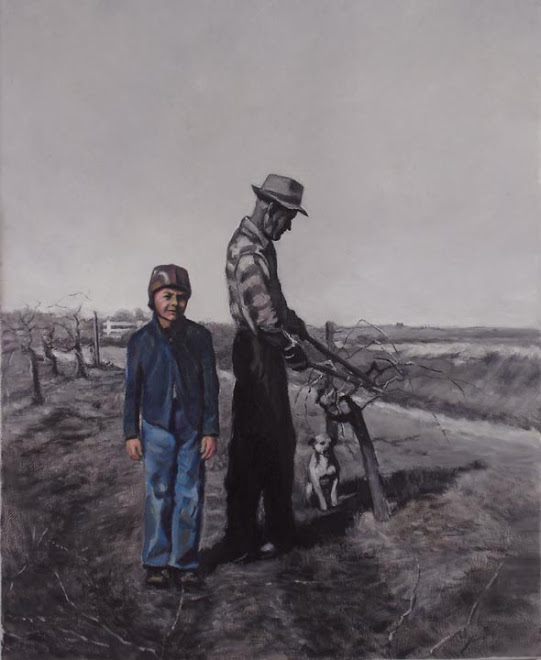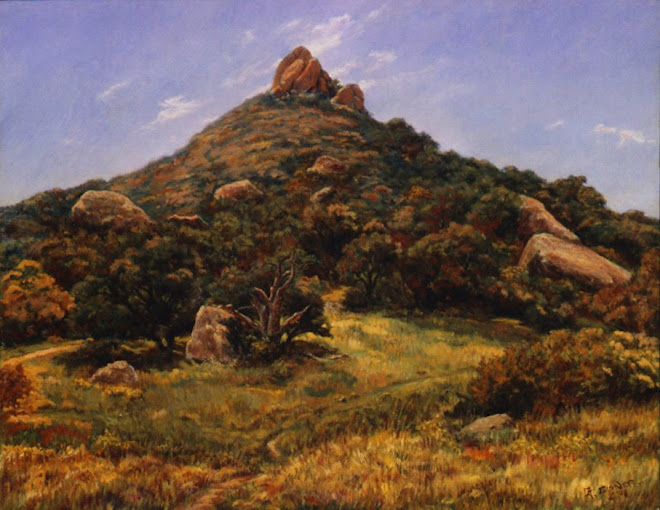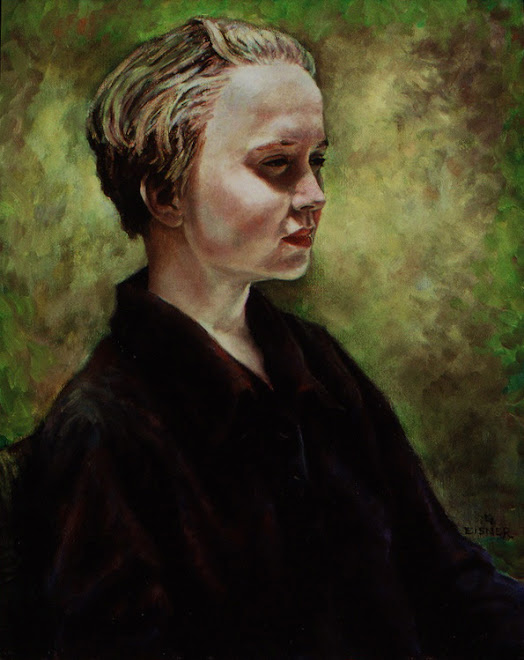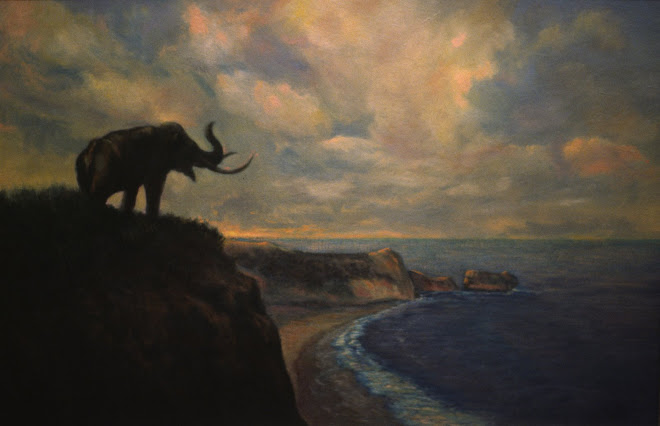I was trained in sculpture from the master of movie make-up, Dick Smith. I have learned many things from other sculptors and technicians I've worked with in the field of make-up and puppetry for film and TV.
As for painting, my mother-in-law Janet Church was instrumental in teaching me the 'tools' of art (elipse concept, cube concept, proportion, direction lines, composition, color, form, etc). Janet learned these principles from children's book writer/illustrator, oil painter, teacher Taro Yashima. My wife Holly is also a skilled teacher and painter, carrying on Taro's and her mother's 'method'. This method can be utilized in drawing, painting, and even sculpture.
I am fortunate in having a supportive and understanding family. Over two decades ago, my parents allowed me to hone my craft (taking Dick Smith's Advanced Professional Make-up Course while living at home), converting my bedroom into a studio.
Since receiving Smith's Professional Caliber Certificate, I have been a prosthetic make-up sculptor and designer for films and TV. Some of my credits include 'The Nutty Professor', 'Terminator 2', '300', 'Frost/Nixon', 'Angels and Demons', 'The Mask of Zorro', 'Gremlins 2', 'Charlie Wilson's War', and sculpting the head of the animatronic Christ used on the cross in 'Passion of the Christ'.
I received an Emmy nomination for Best Make-up for 'Babylon 5'. Additionally, my make-up sculptures won Emmys, three years in a row; one for 'Buffy the Vampire Slayer', and two for 'The x-Files'.
I like creating personal art (aside from film work) for fun, discovery, and sharing my excitement of the subject I've created. I am a Sculptor Member of the California Art Club, and enjoy being a part of their Annual Gold Medal Juried Exhibitions. At this year's Gold Medal show, I am thrilled to have received Artist Advocate magazine's Certificate of Excellence for Most Outstanding Sculpture (The Gymnast).
I'm driven by inspiring others through my art, as I am inspired by creative people.
One day a week, I teach a sculpture class in the digital media department at Otis College of Art and Design. The aim of the class is to help students understand forms while sculpting in clay, so they may convey that experience toward purely digital creations. Teaching is an insightful and enlightening experience for me.
Thank you to those reading all this, who have shaped my life, becoming my friends and colleagues in the world of art.
Wednesday, April 29, 2009
Sunday, April 26, 2009
Comments on my paintings by Glen Eisner
I make a living as a sculptor of prosthetic make-ups in film and TV. I am capable of drawing, yet I am not a master of ‘line’ drawing. My strength is in tonal drawing. I see in forms and volumes, more than I do in line (this is most likely from my interest and experience in sculpture). From there, that mindset is transferred over into my painting. I work the paint into tones, seeing in large shapes. These shapes become the essence of the painting in its sense of composition and abstract design. As it progresses, the painting is further refined into as much detail as I wish. I am hesitant to add detail into the art piece too soon (when it is being blocked in). My prehistoric paintings are obviously studio concoctions (four of which appeared in the book 'Beyond the Dinosaurs' by Athenium Books). The prehistoric pieces are created with the same method as I would attempt a painting on site outdoors (as described above). One becomes a strong painter from the experience of painting outdoors (plein aire); by working from the live figure (animal /human); and picture reference when needed.
I make a living as a sculptor of prosthetic make-ups in film and TV. I am capable of drawing, yet I am not a master of ‘line’ drawing. My strength is in tonal drawing. I see in forms and volumes, more than I do in line (this is most likely from my interest and experience in sculpture). From there, that mindset is transferred over into my painting. I work the paint into tones, seeing in large shapes. These shapes become the essence of the painting in its sense of composition and abstract design. As it progresses, the painting is further refined into as much detail as I wish. I am hesitant to add detail into the art piece too soon (when it is being blocked in). My prehistoric paintings are obviously studio concoctions (four of which appeared in the book 'Beyond the Dinosaurs' by Athenium Books). The prehistoric pieces are created with the same method as I would attempt a painting on site outdoors (as described above). One becomes a strong painter from the experience of painting outdoors (plein aire); by working from the live figure (animal /human); and picture reference when needed.
Subscribe to:
Posts (Atom)


















